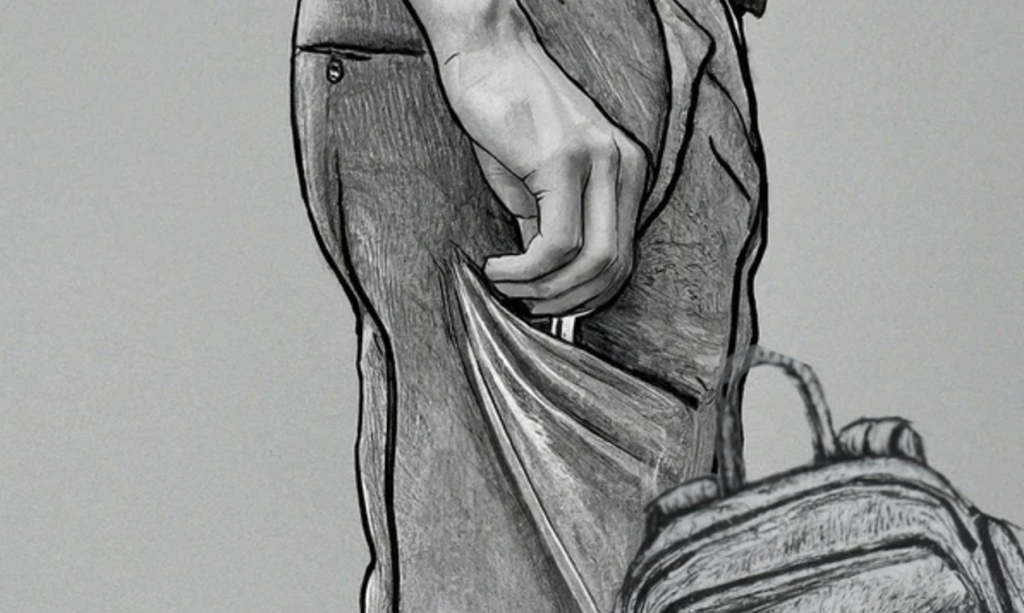SDN has moved!
Subscribe to our new @SurvivalDispatchNews Youtube channel
We’ll deep dive the on-body options as it’s the most vital for emergent threats. We’ll keep it focused on defense while highlighting other implements for survival
BLUF
The surreptitious placement of Escape & Evasion Kits, Firearms, Sensitive Data, or other Tools/Items can decrease discovery and increase survival or success.
Firearms
Ensure a firearm does not print (show an outline under your clothing). Avoid placement of a firearm in areas that bulge. Holster selection is a precursory task to properly conceal carrying, select the type that best pairs with your clothing, firearm size, and capabilities. Test the carry by running and conducting simple tasks to ensure it will stay secure. Don’t adjust or “check” it while in public.
E&E Kits
Handcuff keys and other escape and evasion (E&E) tools should typically be concealed near the waistline as this is where your hands will be restrained. Consider clipping an E&E tool to your underwear or sewing it into your pants. Avoid using metallic tools and opt for polymer or ceramic to avoid detection at metal detectors (or by wands).
The underside of the sole of your shoes, backs of morale patches, against a watch band, or under the collar of a shirt are contingency concealment locations. Wear items around your neck (lanyard/necklace), use in-plain-sight tools (such as an empty key fob that holds supplies inside), swap out shoe laces for paracord/kevlar, hide E&E items under a false bandage on your thigh, or slide supplies into a scrunchie (hair tie).
Other
Knives, tourniquets, and other tools may also require concealments as their observation by others could draw unnecessary attention. As with a firearm, many of these tools may also demand rapid accessibility. Assess your attire and assign a mounting/pocketing location that best matches your need for deployment while also tending to the need for covertness.
Ok, now let’s get into a structured format here and summarize carry options by carrier (person, vehicle, bag). We purposefully left out many other areas for covert storage, stashing, and staging (like your house or place of work) as the basics will be covered in a manner that allows you to creatively think about how to tackle these other areas.
On-Body (on person)
Money belt discreetly worn under clothing for easy access to cash.
Neck lanyard pouch for a USB drive containing essential documents or other lanyard style survival kit.
Travel wallet with a hidden compartment for a small amount of cash. Avoid carrying your main wallet with all your cards.
Sewn-in pockets: Discreet pockets can be added to the inside of clothing, such as the waistband of pants or inside of the cuffs of shirts.
Headband stash: Small items like a handcuff key or a memory card can be hidden within a seam of a ball cap’s headband.
Shoe compartment: Modify the tongue of a shoe to create a small pocket for storing a folded bill or escape and evasion implements.
In Vehicle
Lockable glove compartment with a decoy wallet and less important documents.
Faraday cage for car keys and a spare USB drive with critical information.
Center console compartment for frequently accessed items like cash or a handcuff key.
Behind the radio bezel (certain car models only) for small hidden compartments.
Inside the armrest compartment with a divided organizer to conceal valuables under everyday items.
Trunk or under-floor storage compartments (check local restrictions on firearm storage in your trunk).
Magnetic mount under the car for a small GPS tracker (ensure legal compliance in your area).
In a Bag (backpack, purse, etc)
Internal zippered or Velcro pockets that are covered with a flap or positioned in a less conventional area of the bag (on the outside base).
Portable safe within the bag secured with a cable lock for storing a firearm or escape and evasion tools.
Decoy compartment with less valuable items to divert attention from hidden valuables. Consider a decoy wallet.
=====
Become a Survival Dispatch Insider …
We bring together survival enthusiasts and preppers to share skills and knowledge, so you can enhance your preparedness for emergencies and ensure the safety of you and your community.
The Results You’ll Get …
Our community, courses, and memberships are pretty special. We focus on the ways it will make a huge difference in your life.
Here are a few of the things you’ll be able to do as a member of Survival Dispatch Insider …
1) Improve your emergency preparedness by learning survival skills and strategies from experienced preppers.
2) Build lasting connections with like-minded individuals that share your passion for safety and readiness.
3) Access a wealth of knowledge and resources to assist in protecting you and your community during unexpected situations.
Click HERE to get started.
=====


